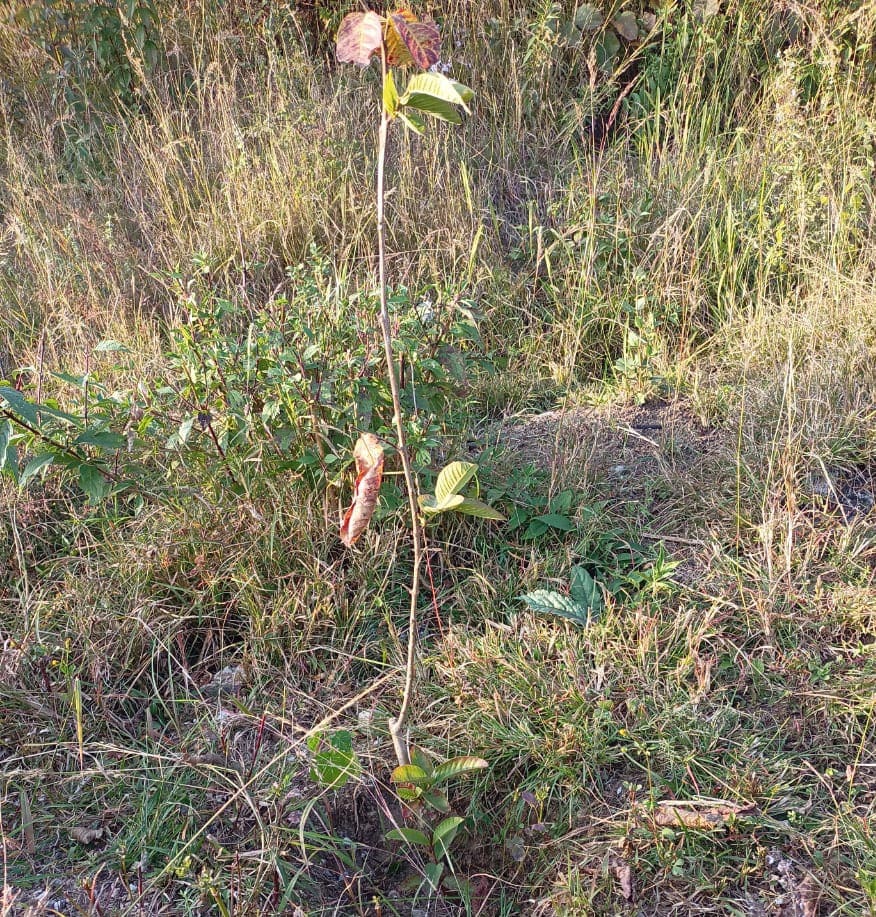
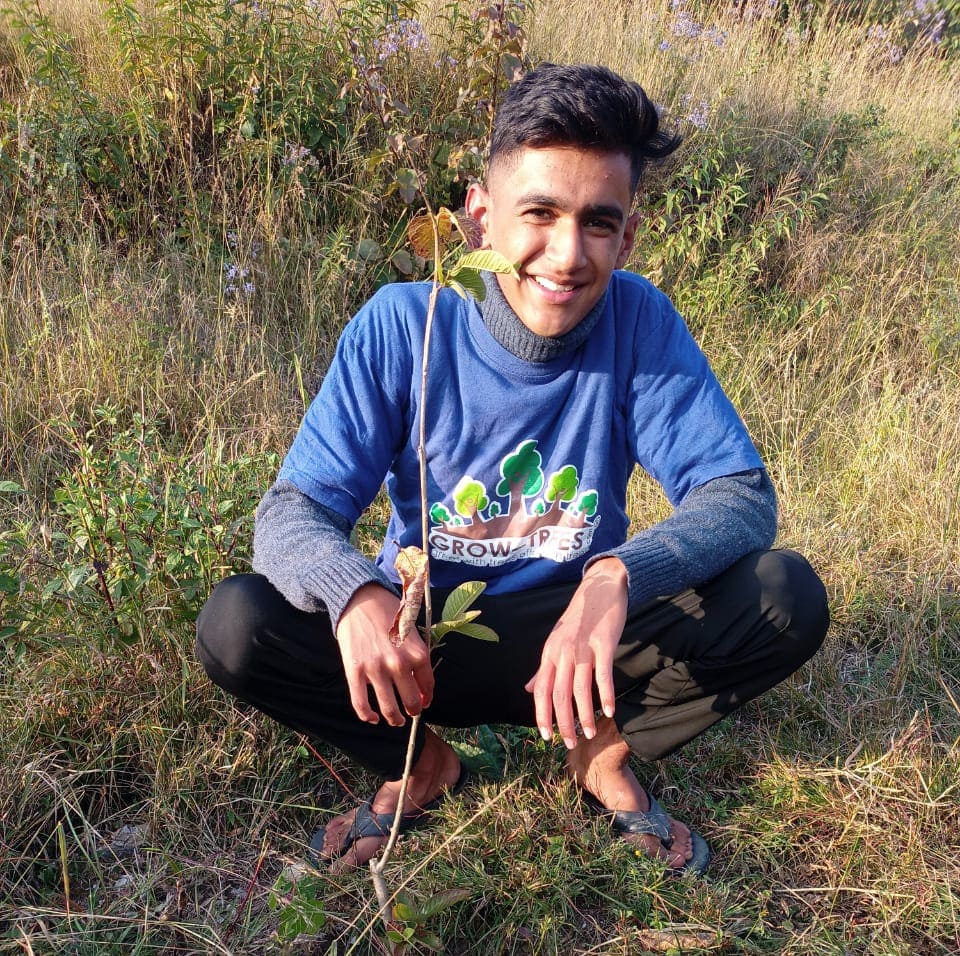
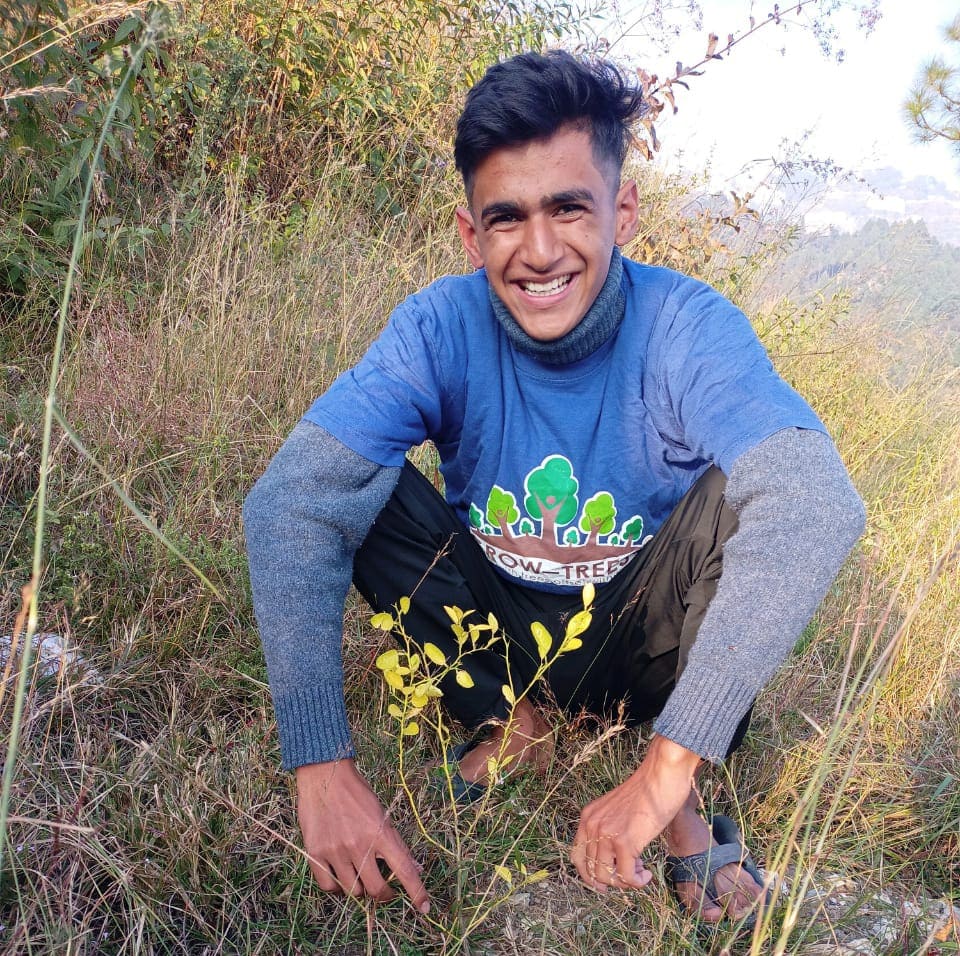
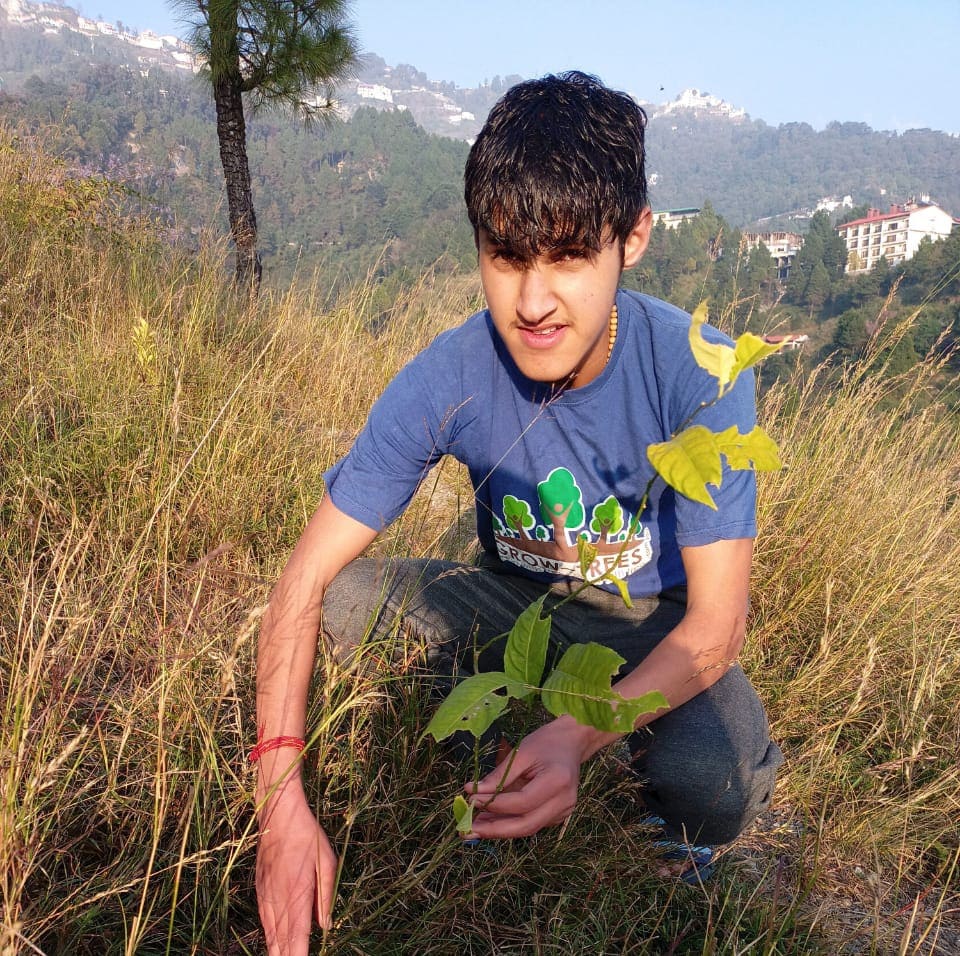
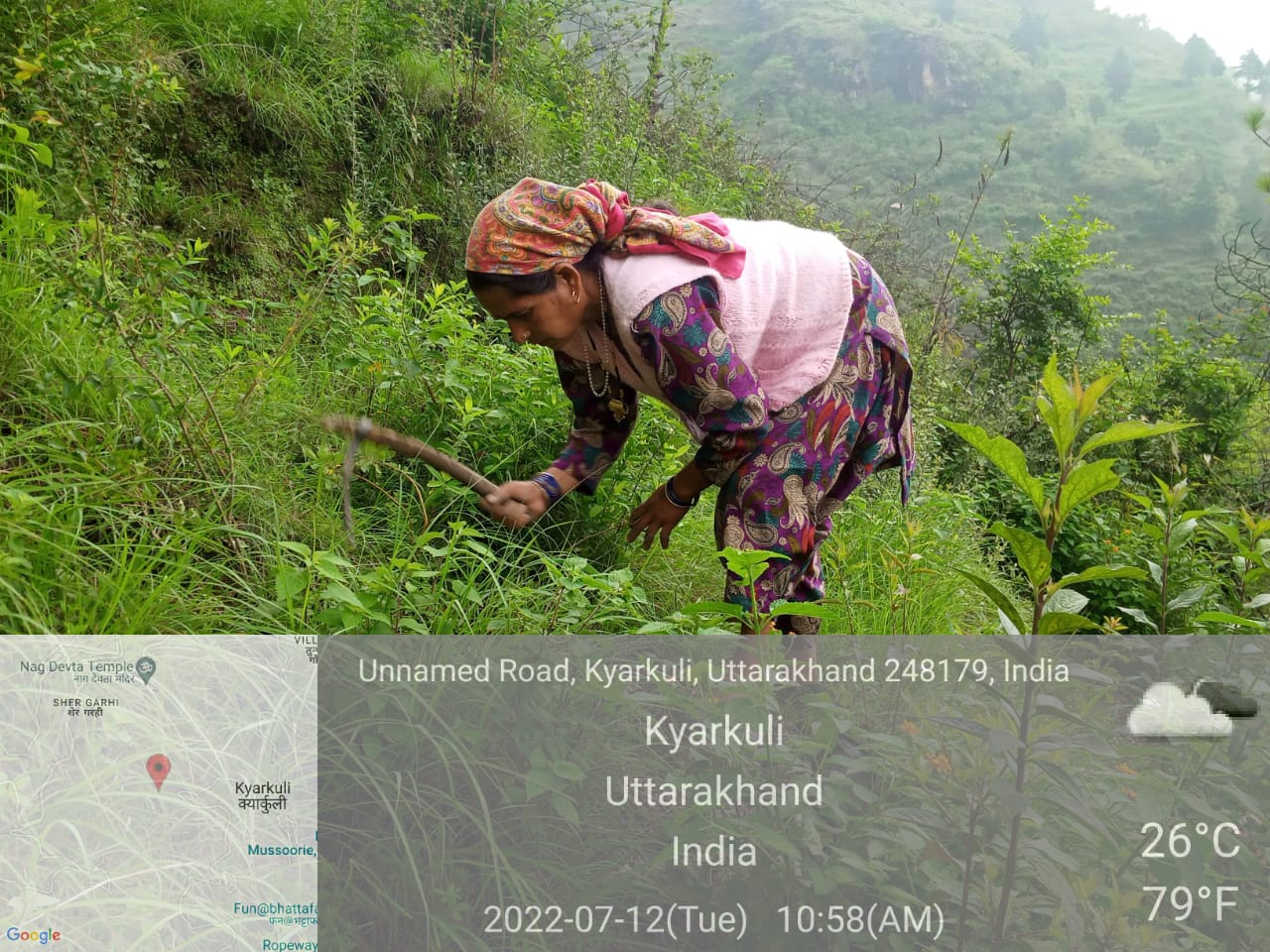
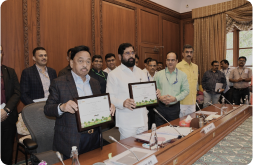
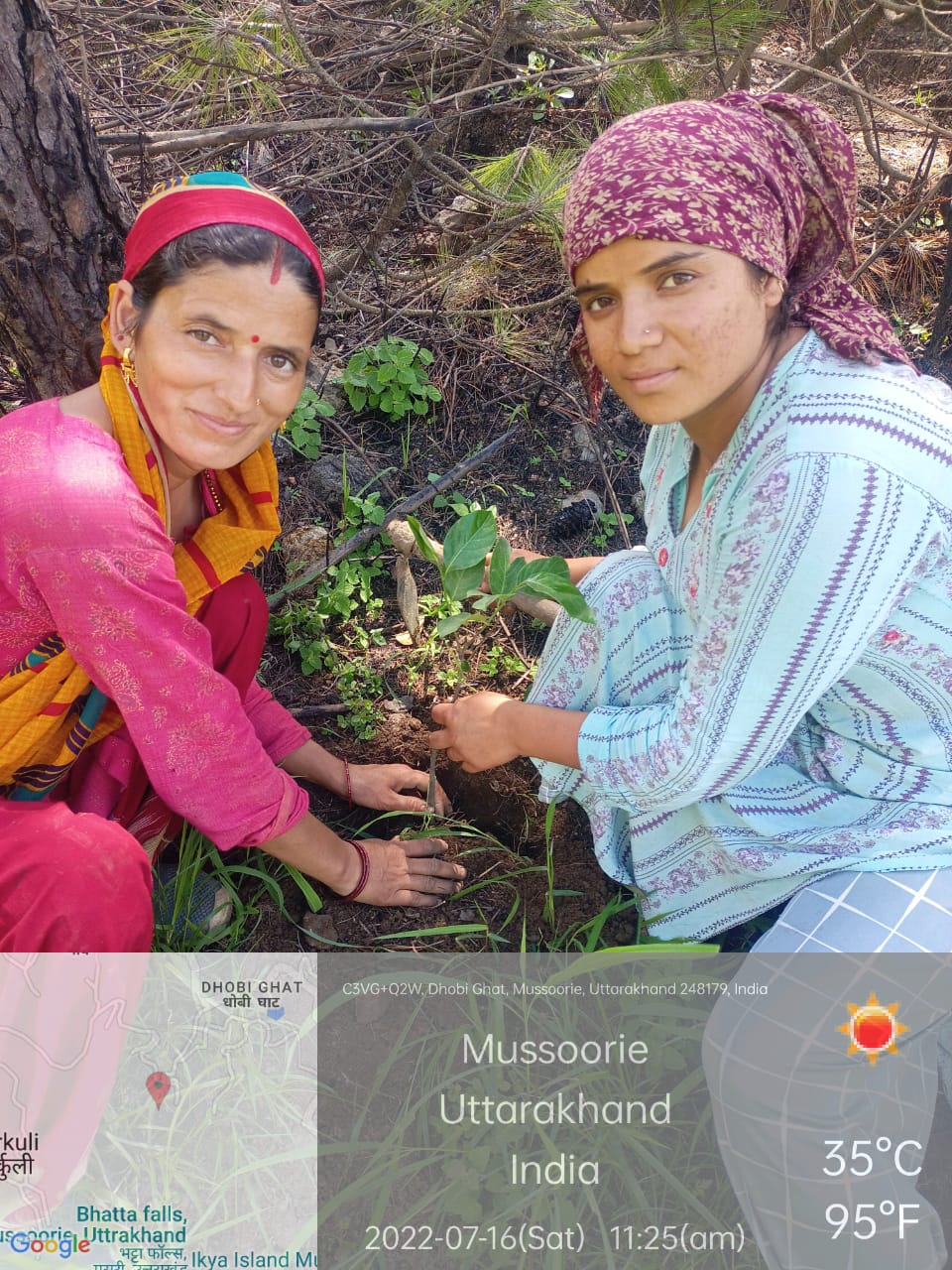
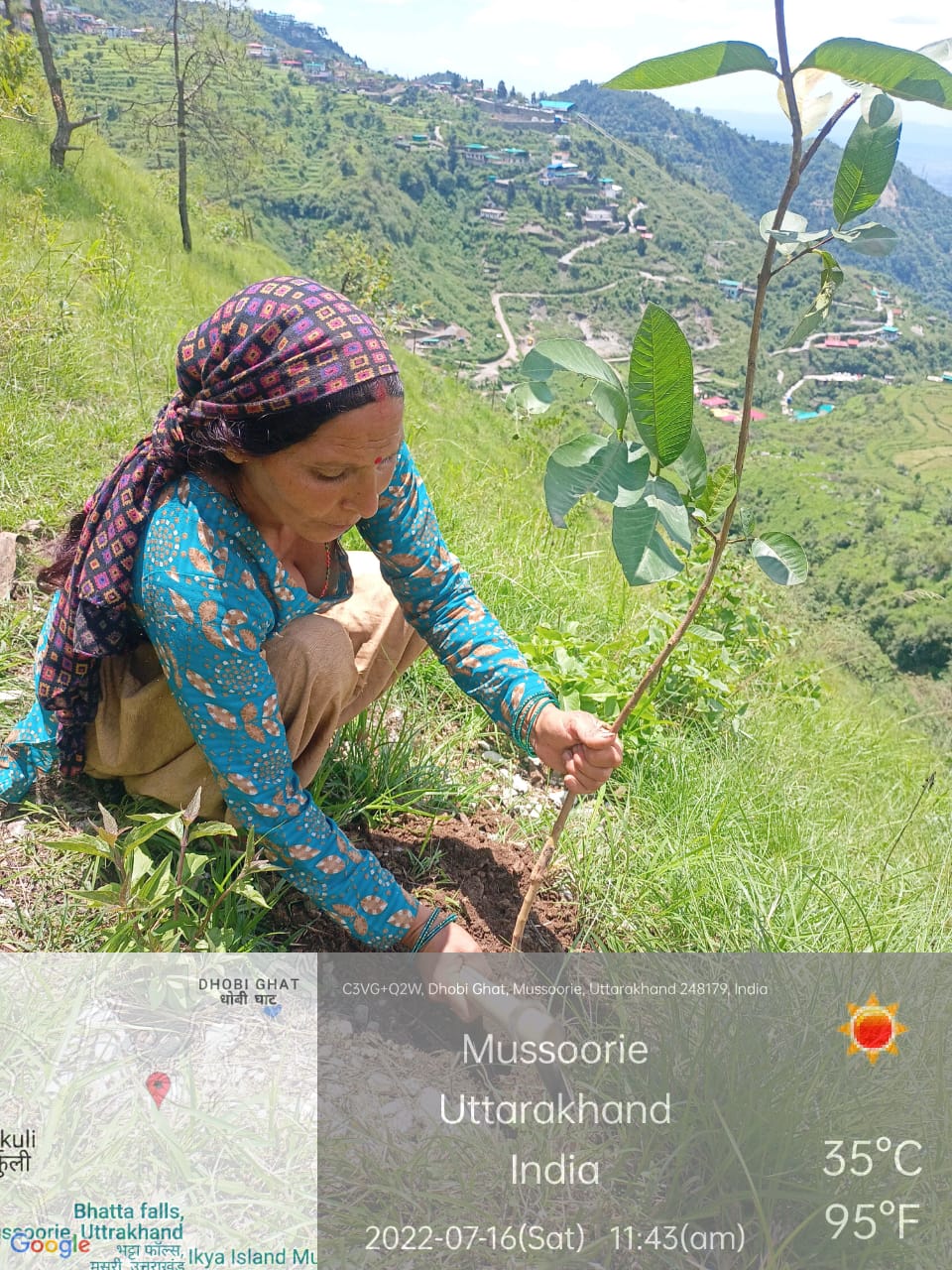
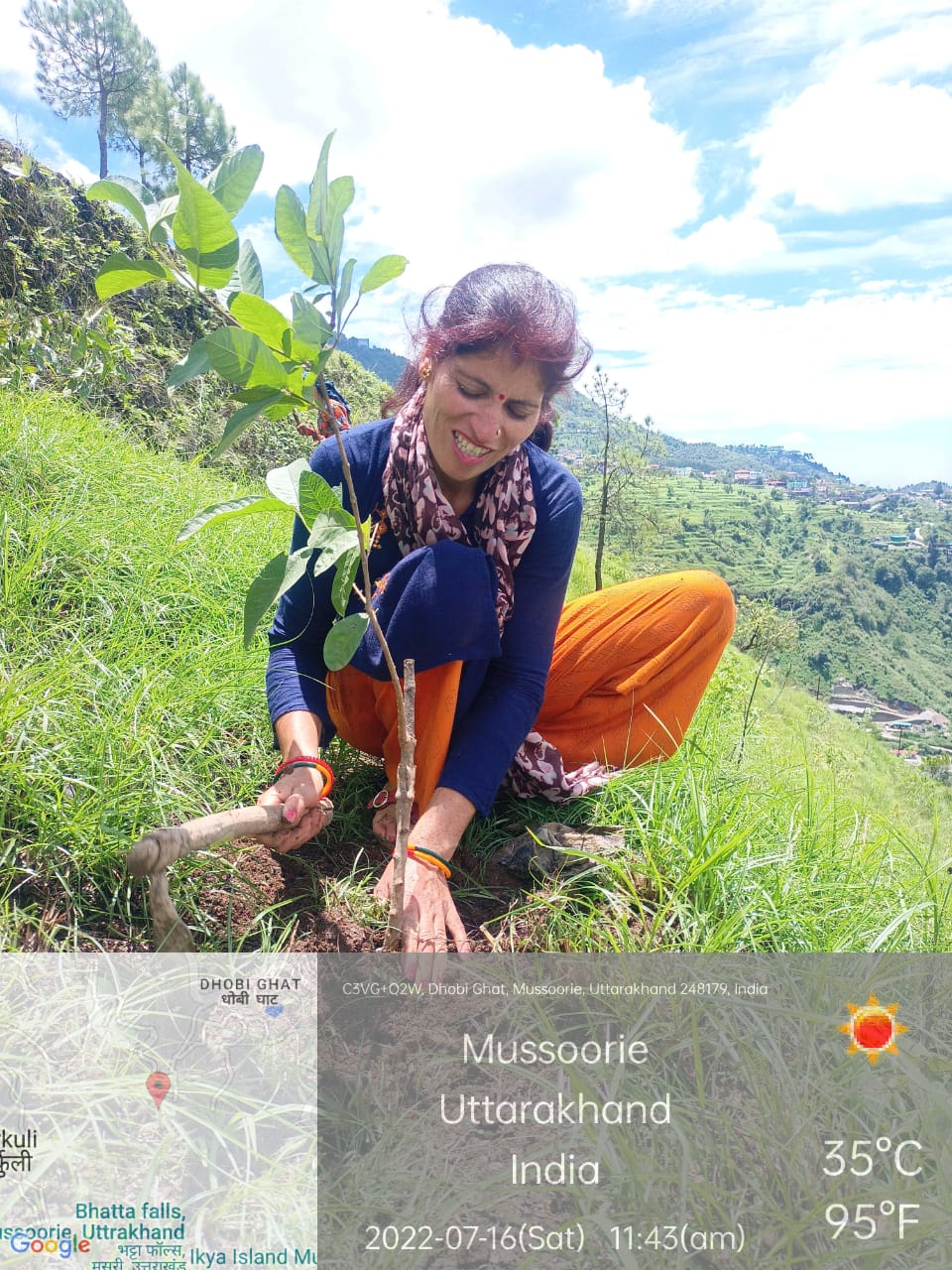

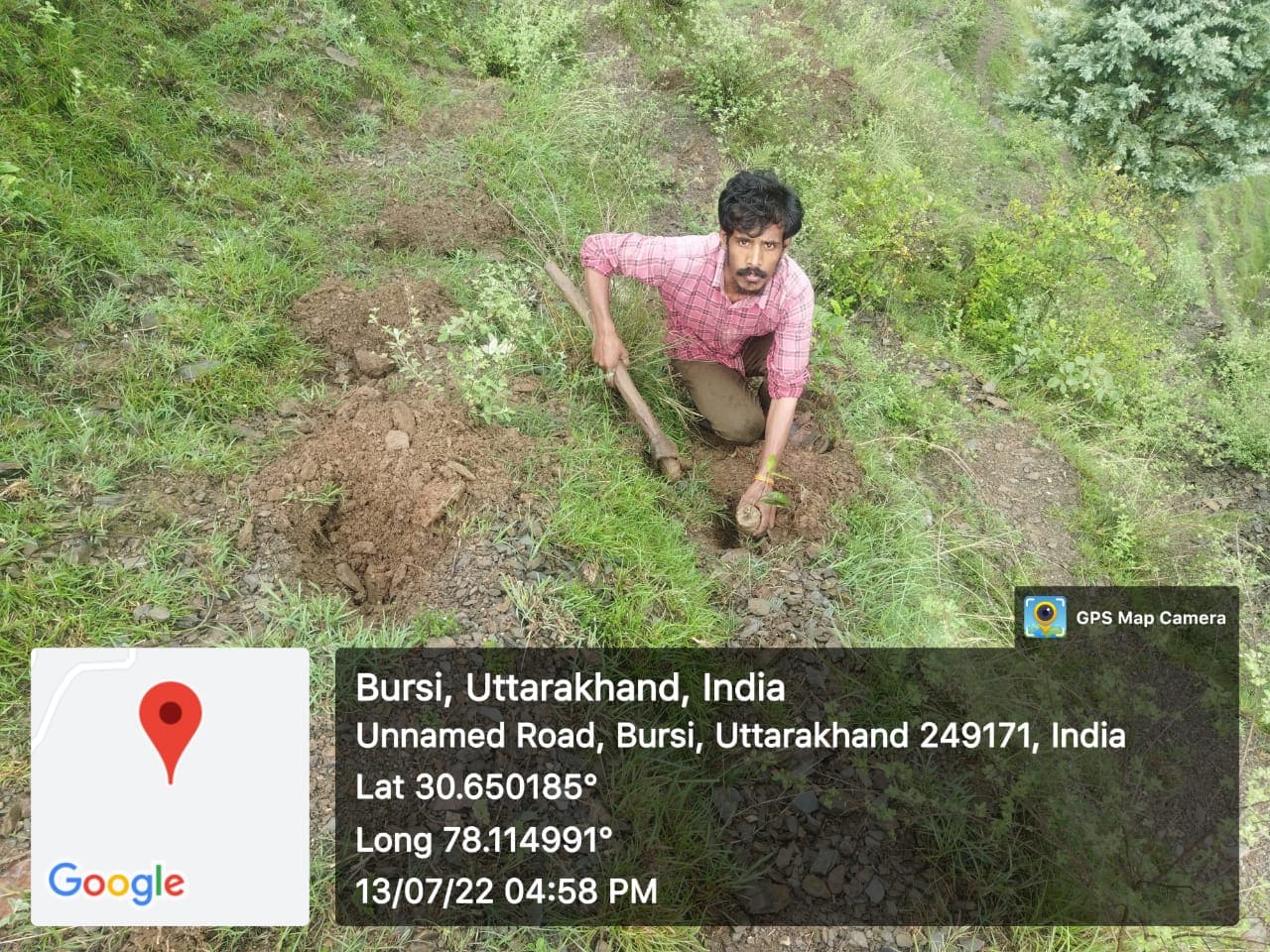
Project Target
0% Remaining
40,000
Trees Planted out of 40,000 Trees

Project Location:
The plantation project is being implemented in the Kyarkuli Bhatta Van Panchayat of Mussoorie district in Uttarakhand, India.
Project Aim
Uttarakhand is situated in the northern part of India, surrounded by the mighty Indian Himalayas. The Himalayas are continuously facing stress from the global climatic scenario which is consequently impacting its fragile ecosystems, rich biodiversity, and sensitive local livelihoods. Planting trees is crucial in this region Forests and climate change are intimately intertwined, according to the United Nations Environment, forests capture atmospheric carbon dioxide at a rate equivalent to about one-third the amount released annually by burning fossil fuels. Stopping deforestation and restoring forests, therefore, could provide up to 30 per cent of the climate change solution.
Summers in the region are warm and very wet, with July and August averaging approximately 660 millimeters or 25.98 inches of rain per month due to orographic lift of the extremely moist monsoonal air. The region usually receives a few spells of snowfall in December, January and February, although the number of snowy days has come down in recent years due to a combination of local and global factors, such as deforestation, construction activity, and global warming.
The economy of the locals is primarily dependent on tourism. Tourists come primarily from northern Indian states. According to the state tourism portal report of 2017, in Mussoorie itself, there were 27,94,108 and 1865 numbers of domestic and foreign visitors respectively.
Because of this huge influx of tourists, the demand for lodges/hotels and other related infra-structure and super-structure facilities and amenities in the area was enormous, and it imposed great stress on the natural environment.
The random dumping of plastic and other hazardous waste is not only posing a grave threat to the ecology of the hill town but also leading to several water bodies, that are a source of water for the town, being polluted as tonnes of garbage are being dumped down the mountain slopes and find their way into these water systems (Times of India, May 2, 2019)
The forest resource management in the state is administered by the autonomous local institution which has been in existence since 1921 –the ‘Van Panchayats’ or Forest Councils. 20 to 30 per cent of the local households in the selected villages are living below the poverty line with a very high dependency on forest resources for their day-to-day requirements, primarily for firewood and livestock fodder.
All these issues make forests extremely important in the region. A study by TERI University mentions the importance of forests in hydrological services, carbon sequestration and storage, pollination services for agriculture and also the overuse of the resources for livelihood requirements of the local community, making native tree plantation extremely important for the local community and the ecology of the area.
In this tree plantation initiative, species like MadhaviLata (Hiptagebenghalensis), Aadu/ Peach (Prunuspersica), White orchid tree (Bauhinia picta), Redbud tree (Oklahoma Redbud tree), Lemon tree (Citrus*latifolia), Guava (Psidiumguajava), Kandis (Garciniacowa), Green Ash (Fraxinuspennsylvanica), Chinese tallow (Triadicasebifera), Silver Oak (Grevillearobusta), Cinnamon (Cinnamomum), Orange (Citrus X Sinensis), Bhimal (GrewiaOptiva), Ghuyal, Mango tree (MangiferaIndica), Pomegranate (Punicagranatum) will be planted.
The project involves tree plantation of local tree saplings in the selected Van Panchayat areas of Kyarkuli Bhatta, Mussoorie, covering over 20 hectares of land. This will primarily strengthen the unique ‘Van Panchayat’ governance for sustainable natural resource management. The tree plantation will encourage participatory approach with direct community involvement in conservation action simultaneously generating local employment while project implementation and monitoring which supports the sensitive rural economy. The selected native species will be planted in the identified areas to reclaim into forest lands to improve wildlife habitat, control top soil erosion, check surface water runoff and aid ecosystem services to overall support benefit-cost ratio to the locals. The tree plantation will help to absorb approximately 300,000 kgs of atmospheric carbon annually upon attending mature forests while greening the environment.
Creating about 1,200+ workdays to the locals, the current project seeks to value standing forests, work towards afforestation program, regulate the dynamics of resource extraction from the forests and promote alternative livelihood options and energy sources to local communities. This works towards a clear strategy towards achieving maximum benefits from standing forests for local communities as well as the environment at large helping to offset pollution from large tourist influx.
Social Impact of Growing Trees
Community Engagement
Tree planting initiatives often involve local communities, which can lead to greater community cohesion.
Ecological Education
Provides opportunities for community members, especially children, about the importance of environmental sustainability.
Urban Beautification
Trees contribute to the aesthetic enhancement of urban areas, making cities more pleasant and liveable.
Climate Resilience
By improving green cover, tree planting helps make communities more resilient against climate impacts like heatwaves.
Employment Creation
Planting trees creates employment for local community members like planting and maintenance, administrative roles, and more long-term jobs in management.
Wildlife Habitat
Trees provide critical habitats for various species of wildlife. Enhancing tree cover helps preserve biodiversity, which can be an ecological boon for local communities
Copyrights @ 2025 All rights reserved by Pangea EcoNetAssets Pvt Ltd.